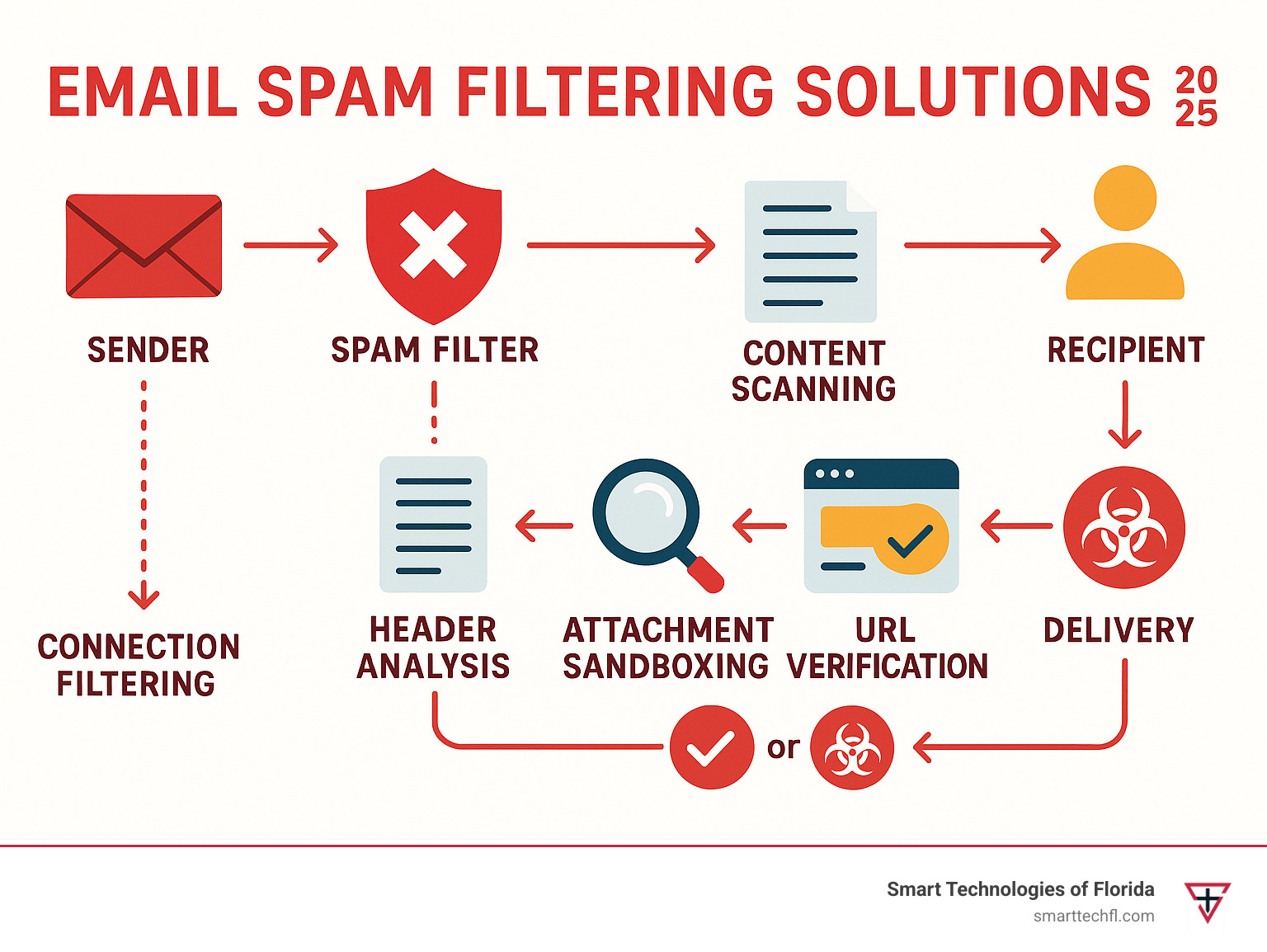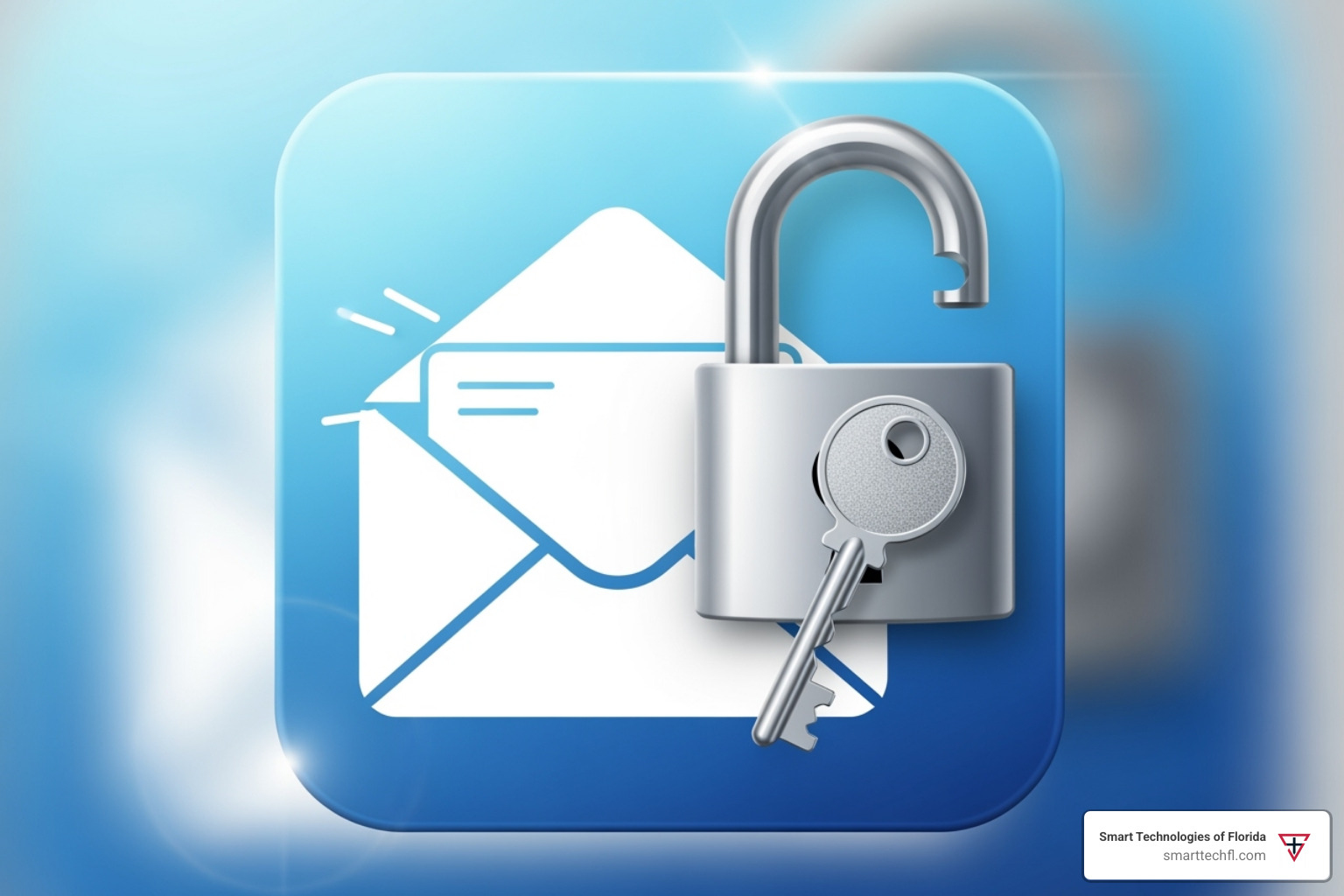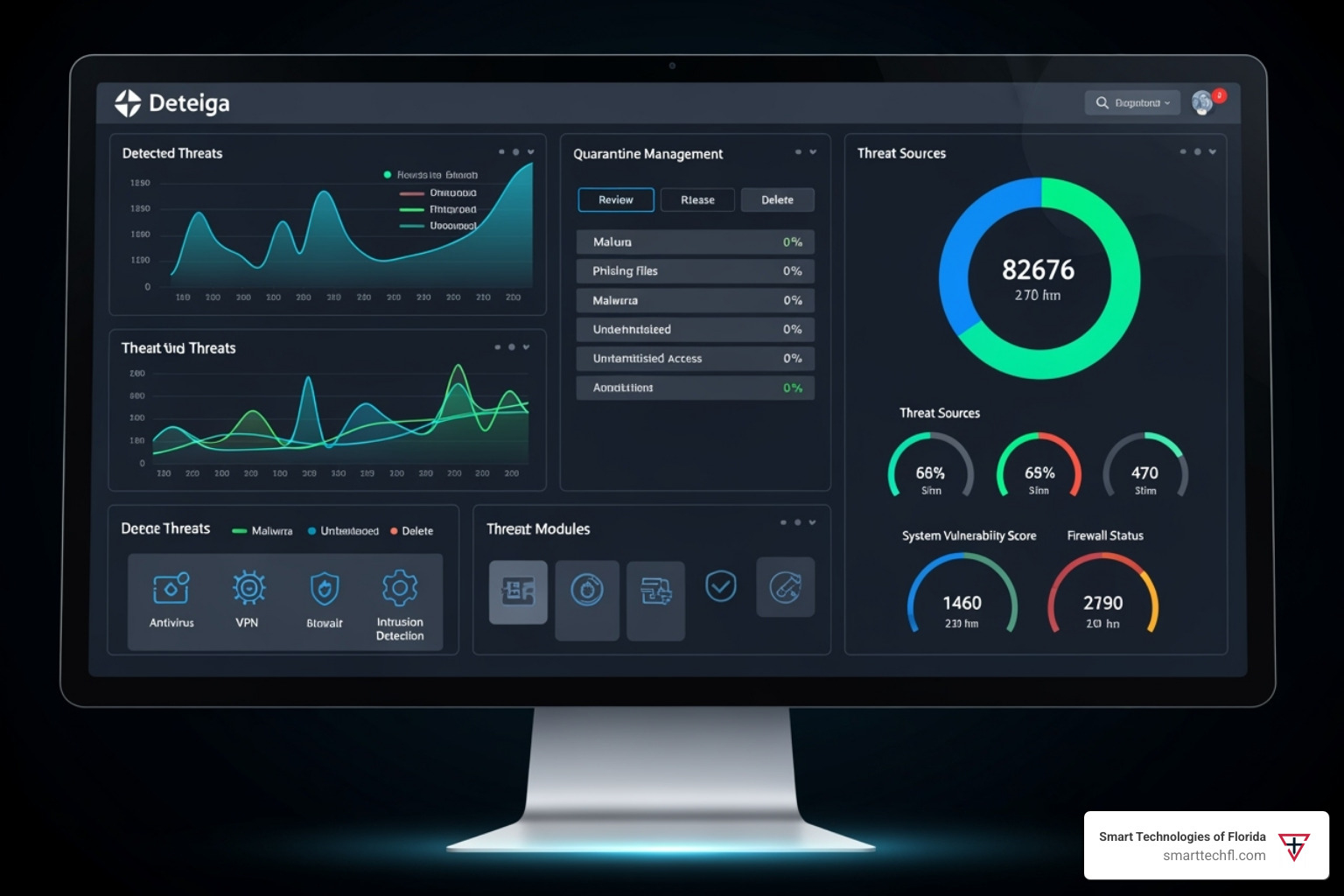Email Spam Filtering Solutions: Which One is Right for You?
Email spam filtering solutions have become essential as businesses face an unprecedented surge in cyber threats. With spam accounting for a significant portion of all emails and phishing attacks on the rise, your inbox is under constant attack.
Top email spam filtering solutions offer:
- Cloud-based services for scalable protection
- AI-powered filters using machine learning for high detection rates
- Open-source options like Apache SpamAssassin for customizable security
- Enterprise gateways with sandboxing and advanced threat protection
- Integrated solutions that work with Microsoft 365 and Google Workspace
The stakes are high. Phishing emails are responsible for 90% of data breaches, and it takes an average of 25 minutes for an employee to recover from a single spam-related distraction.
Your built-in email protection from providers like Gmail or Outlook isn’t enough. These default filters use basic systems that struggle against sophisticated attacks like Business Email Compromise (BEC) and AI-generated phishing.
Modern spam filtering solutions offer layered protection, using sandboxing to test attachments, behavioral analysis to spot unusual patterns, and machine learning to adapt to new threats. The best solutions achieve high accuracy rates while minimizing false positives that could block legitimate business emails.
This guide will help you steer the landscape of email security. We’ll compare cloud versus on-premise options, explore AI-powered features, and provide a framework for choosing the right protection for your business.

Why Your Standard Inbox Protection Isn’t Enough
Your Gmail, Outlook, or Apple Mail comes with built-in spam protection, but relying on these default filters is like using a screen door to keep out a hurricane. They catch obvious spam, but today’s cybercriminals are far more sophisticated.
The reality is that Advanced Persistent Threats (APTs), zero-day attacks, and Business Email Compromise (BEC) schemes are designed to slip through basic filters. These convincing attacks have fooled executives into wiring millions to fraudsters and can establish dangerous footholds in your network.

This is where dedicated email spam filtering solutions bridge the gap. They transform your email defense strategy, offering granular control, improved productivity, and adaptive security layers. Learn more about how Email Spam Filters Boost Security for modern businesses.
The Benefits of a Dedicated Filtering Service
Transitioning to a dedicated service yields dramatic results, freeing up IT teams and boosting employee productivity.
- Greater Accuracy: Dedicated solutions consistently achieve detection rates above 99% using machine learning that understands context, not just keywords.
- Reduced False Positives: Advanced algorithms are fine-tuned to minimize the incorrect flagging of legitimate emails, ensuring important messages get through.
- Centralized Management: A single dashboard allows IT administrators to set policies, review threats, and generate reports for the entire organization.
- Comprehensive Reporting: Gain insights into threat trends, targeted users, and overall security performance, which is invaluable for planning and compliance.
- Compliance Features: Many services offer built-in support for regulations like HIPAA and GDPR, with features like encryption and audit trails.
- Business Continuity: If your primary email server fails, many services can queue messages and provide backup access, preventing communication downtime.
For a deeper understanding of these advantages, explore our comprehensive Email Filtering Benefits for Business Guide.
Understanding the Limits of Built-in Filters
Built-in filters are not designed for the modern business threat landscape. Their limitations are a key reason why dedicated solutions are essential.
- Basic Rule-Based Filtering: Most default protection relies on simple checklists (suspicious keywords, sender blacklists) that are easily bypassed by targeted attacks.
- Slower Adaptation: Dedicated security companies update their threat intelligence constantly, often multiple times a day. General email providers cannot match this pace.
- Limited Customization: As Microsoft acknowledges in their Overview of the Junk Email Filter, these tools are for individual users, not comprehensive organizational strategies.
- Gaps in Protection: Built-in filters typically lack advanced features like behavioral analysis, attachment sandboxing, or deep link analysis needed to stop sophisticated attacks like AI-crafted phishing and BEC schemes.
Core Features to Demand in an Email Filtering Service
An effective filtering service is a comprehensive security shield. When evaluating email spam filtering solutions, focus on these core components that separate basic protection from a robust defense.

Threat Detection and Prevention
The heart of any filter is its ability to stop threats before they reach your team.
- Sandboxing for Attachments: This is a non-negotiable feature. It opens suspicious files in an isolated environment to see if they attempt malicious actions. This is crucial for stopping zero-day attacks.
- URL Analysis and Rewriting: The system scans links upon arrival and can rewrite them to route clicks through a real-time security check, protecting users from malicious websites.
- Anti-Phishing Intelligence: AI-powered filters analyze writing patterns, sender behavior, and domain authenticity to detect impersonation attempts and other phishing tactics.
- Malware and Ransomware Blocking: Multi-layered detection engines and behavioral analysis find threats hidden in attachments, email headers, or even the message body.
- Spoofing Detection: Uses authentication protocols like DMARC, DKIM, and SPF to verify that an email’s sender is legitimate.
- Data Loss Prevention (DLP): Scans outgoing emails for sensitive data like credit card numbers to prevent accidental or malicious data leaks. Our guide on What is Email Filtering? dives deeper into these mechanisms.
Management and Usability
Powerful security is useless if it’s too complex to manage.
- Quarantine Management: An intuitive interface should allow users to easily review and release blocked emails without needing IT support.
- User-Friendly Dashboard: Provides clear, visual data on threats and system performance, making it easy to understand your security posture.
- Customizable Policies: Allows administrators to set different rules and sensitivity levels for various departments or user groups.
- Allow and Block Lists: While AI reduces the need for manual lists, the ability to quickly whitelist trusted partners or block persistent spammers remains essential. Our Email Spam Filter Checkers Guide explains this further.
- Detailed Reporting: Generates reports on threat types, targeted users, and protection performance, which is vital for compliance and planning.
- Directory Integration: Syncs with Active Directory or LDAP to automate user account management.
Advanced Security and Privacy Options
For organizations with specialized needs, look for these improved features.
- End-to-End Encryption (E2EE): Some comprehensive solutions integrate encryption to ensure sensitive communications remain private.
- Open-Source Alternatives: Tools like Apache SpamAssassin offer unparalleled control and transparency for organizations with the technical expertise to manage them.
- Email Archiving: Creates a permanent, searchable record of all communications for legal findy and compliance.
- Outbound Filtering: Scans emails leaving your network to prevent a compromised account from sending spam and damaging your domain’s reputation.
For more insights, explore our article on Secure Email Software.
Comparing Key Types of Email Spam Filtering Solutions
When choosing email spam filtering solutions, you’re selecting an architectural approach. The main choice is between cloud-based services and on-premise gateways, each with distinct advantages depending on your resources and security needs.
Cloud-Based vs. On-Premise Gateways
This is the most fundamental choice, impacting cost, control, and maintenance. Cloud-based solutions route your email through a vendor’s servers for cleaning before it reaches your inbox. On-premise solutions involve installing hardware or software within your own network for total control.
Here’s how they compare:
| Feature | Cloud-Based Solutions | On-Premise Solutions |
|---|---|---|
| Scalability | Highly scalable; easily accommodates growth | Depends on hardware capacity; requires manual upgrades |
| Maintenance | Managed by the vendor; automatic updates | Requires internal IT staff for setup and maintenance |
| Cost | Subscription-based (per-user); lower upfront cost | Higher upfront cost for hardware/software licenses |
| Control | Less direct control; policies managed via a portal | Full control over hardware, software, and data |
| Implementation Speed | Fast deployment, often within hours | Slower deployment due to installation and configuration |
The SaaS model benefits are compelling for most businesses, offering enterprise-level security without the management overhead. However, data sovereignty concerns may lead some highly regulated organizations to choose on-premise solutions. The difference in IT resource requirements is significant, as detailed in our IT Infrastructure Solutions Guide.
The Power of AI-Powered Email Spam Filtering Solutions
AI-powered solutions are a quantum leap from old rule-based systems. Instead of just checking for keywords, they analyze email like a security expert.
- Machine Learning: Algorithms analyze millions of emails to learn the subtle patterns that distinguish threats from legitimate communication, constantly improving over time.
- Behavioral Analysis: The system establishes a baseline for your organization’s normal email activity and flags significant deviations, such as an unusual wire transfer request from a CEO’s account.
- Anomaly Detection: This works with behavioral analysis to spot sophisticated attacks that bypass conventional defenses.
- Predictive Threat Intelligence: By connecting to global threat networks, these filters can block new attack campaigns before they even reach your organization.
This AI-driven approach, often using techniques like Bayesian filtering, results in reduced false positives and high detection rates for zero-day threats, with research showing accuracy rates exceeding 97%. AI-powered filters don’t just block more threats—they do it more intelligently and with less disruption.
How to Select the Right Solution for Your Business
Choosing the right email spam filtering solution is a strategic decision that impacts your security, productivity, and budget. A thoughtful, step-by-step approach ensures you find the perfect fit.

Assess Your Organization’s Needs
Before comparing vendors, evaluate your unique situation.
- Company Size: Small businesses often benefit from simple, cloud-based solutions, while large enterprises may need granular controls and dedicated support. Our Cybersecurity Solutions for Small Business guide offers custom advice.
- Industry Regulations: If you’re in healthcare (HIPAA) or finance (SOX), look for solutions with specific compliance features like archiving and data loss prevention.
- Existing IT Infrastructure: Cloud-based filters integrate seamlessly with platforms like Microsoft 365 or Google Workspace. On-premise solutions may be better for organizations with existing email servers.
- Threat Risk Profile: High-risk organizations that handle sensitive data need advanced features like sandboxing and behavioral analysis.
- User Technical Skill: Choose a solution with a user-friendly quarantine management system that your team can use without constant IT assistance.
Evaluate Pricing and Support Models
Look beyond the sticker price to understand the total value.
- Pricing Models: Most cloud solutions use per-user per-month pricing. Compare tiered feature packages to ensure you’re only paying for what you need. Large organizations can often negotiate quote-based enterprise plans.
- Free Trials: Use 14-30 day trials to test a solution’s real-world performance, ease of use, and integration capabilities.
- Customer Support: Look for providers with 24/7 support and check reviews on their response times.
- Service Level Agreements (SLAs): Strong SLAs guarantee uptime, detection rates, and low false positive percentages, reflecting the vendor’s confidence.
Final Checks: Implementation and Management
Focus on the practical aspects of deployment and daily use.
- Ease of Setup: Cloud services can often be set up in hours with a simple MX record change. On-premise solutions require more time for installation and configuration.
- Platform Integration: The solution should offer native connectors for platforms like Microsoft 365 and Google Workspace to ensure a smooth workflow.
- Migration Downtime: Plan your transition during off-peak hours to minimize disruption. Our Email Spam Protection Tips to Secure Inbox offers guidance on this process.
The right solution should feel like a natural extension of your email system—powerful yet invisible to daily operations.
Conclusion
Choosing the right email spam filtering solution is a critical cybersecurity decision for your business. It’s not just about cleaning up clutter; it’s about building a fortress around your digital communications to defend against modern cyber threats, which cause 90% of data breaches.
Your built-in email protection was never designed for today’s sophisticated attacks. It’s time to upgrade to a dedicated solution that can protect your business. Whether you opt for a cloud-based, on-premise, or AI-powered filter, the key is to align the choice with your organization’s specific size, industry, and risk profile. The best solution blocks threats effectively while integrating seamlessly into your workflow.
For businesses across Florida looking to improve their email security, Smart Technologies of Florida brings 23 years of experience in creating custom solutions. We believe technology should empower your business, not complicate it.
Your email security is too important to leave to chance. The cost of a single breach far exceeds the investment in proper protection.
Get expert help with your IT security.
How does an email spam filter work?
An email spam filtering solution acts as a multi-layered security checkpoint. It analyzes various elements of each email, including sender reputation, headers for signs of spoofing, and content for malicious code or phishing language using machine learning. It also uses attachment sandboxing to safely test files and URL analysis to check links. Based on a cumulative risk score, the filter will deliver, quarantine, or block the message according to your organization's policies.
Can email filters stop 100% of threats?
No security solution is 100% foolproof, as cyber threats are constantly evolving. However, top-tier email spam filtering solutions achieve detection rates exceeding 99.9% for spam and malware. Their effectiveness comes from AI and machine learning, which can identify new, previously unseen attacks. The best defense is a layered security approach, where your email filter works alongside endpoint protection, employee training, and data backups to minimize risk.
What is a "false positive" and how can I manage it?
A false positive occurs when a legitimate email is incorrectly flagged as spam. Modern email spam filtering solutions minimize this with intelligent learning algorithms that improve over time. You can manage false positives by:
Reviewing your quarantine folder regularly to release any misclassified messages.
Fine-tuning filter sensitivity with your administrator to find the right balance between security and convenience.
Using "allow lists" (or whitelists) to ensure emails from trusted partners and clients are always delivered.












